Abstract
The purpose of this study was to develop a self-instructional package that would aid highly distractible children in increasing their attending behavior in a training and two generalization (a one-to-one and a classroom) situations. Three untrained subjects were monitored for general comparison and social validation purposes. One of these control subjects was distractible and the other two (criterion comparison) were evaluated as not having attentional problems. A multiple baseline design was employed in which training was sequentially introduced across subjects. During training, the experimental subjects were taught through self-instruction to focus their attention and to cope with two tasks, math and printing. After learning the self-instructions the subjects were systematically and sequentially exposed to photo-slides of distracting situations, to audio-distractors composed of noisy lunchroom verbal peer interactions, and to in vivo distractors provided by kindergarten children playing with wooden blocks in the training setting. The entire training procedure was handled in a game-like context to maintain subject interest and to facilitate generalization. The results suggested that the training package produced direct and generalized changes in self-instructional behavior. In addition, a decreae in off-task behavior occurred during math, printing, and also during a phonics program in the one-to-one and classroom situations. However, reliable changes in academic task performance were not observed. Finally, no systematic changes on any of the dependent measures occurred for the three untrained subjects.
Full text
PDF
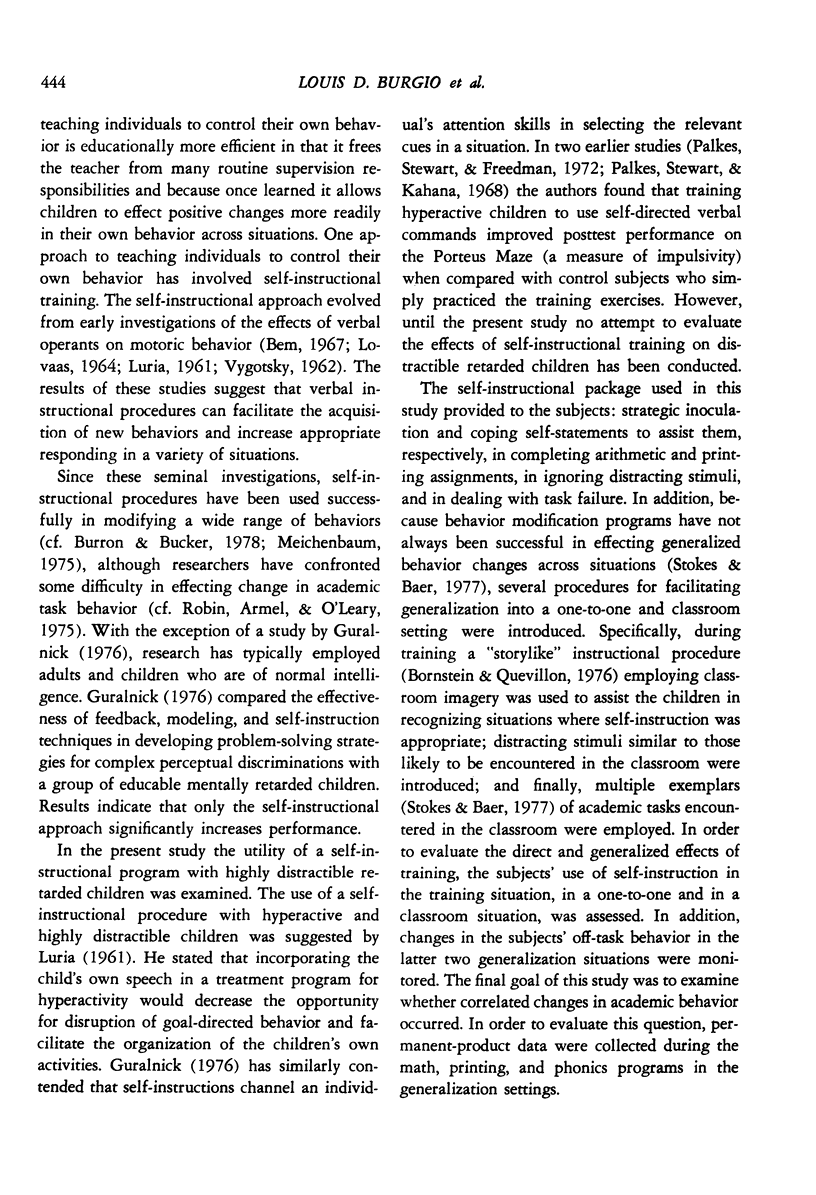


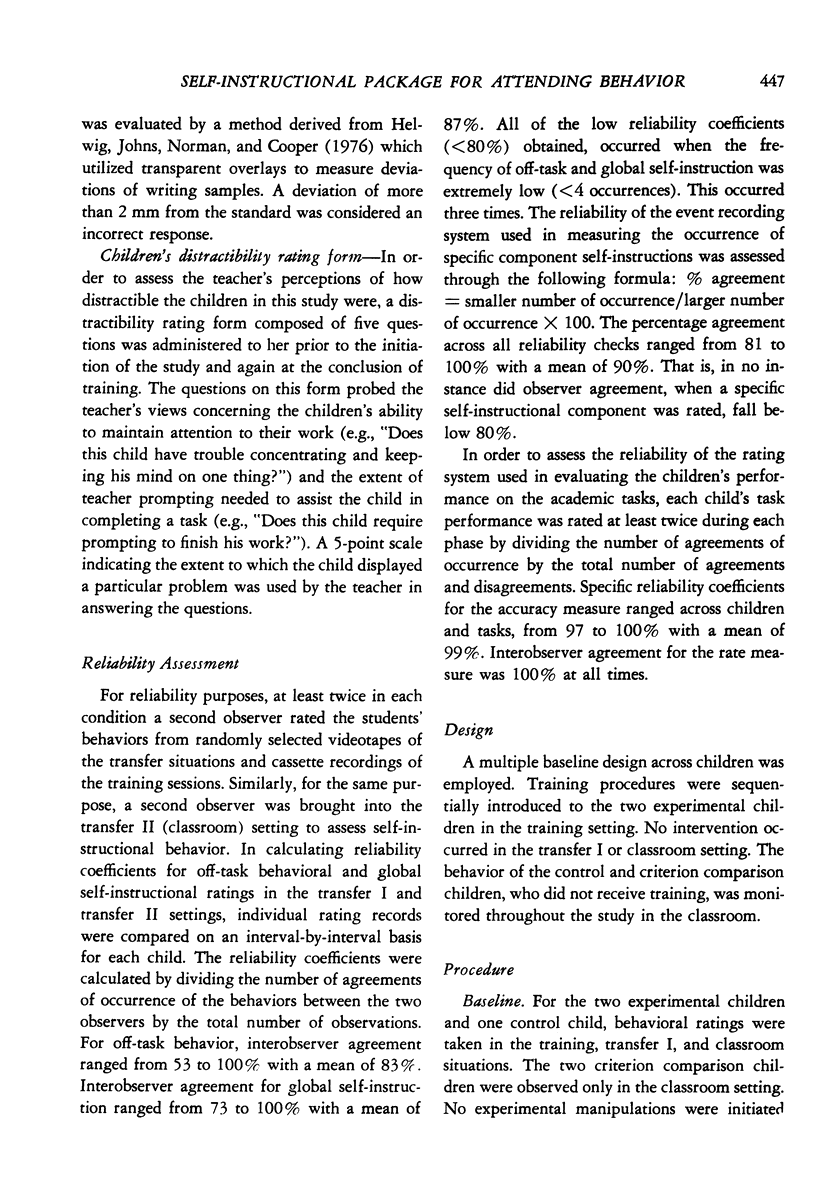

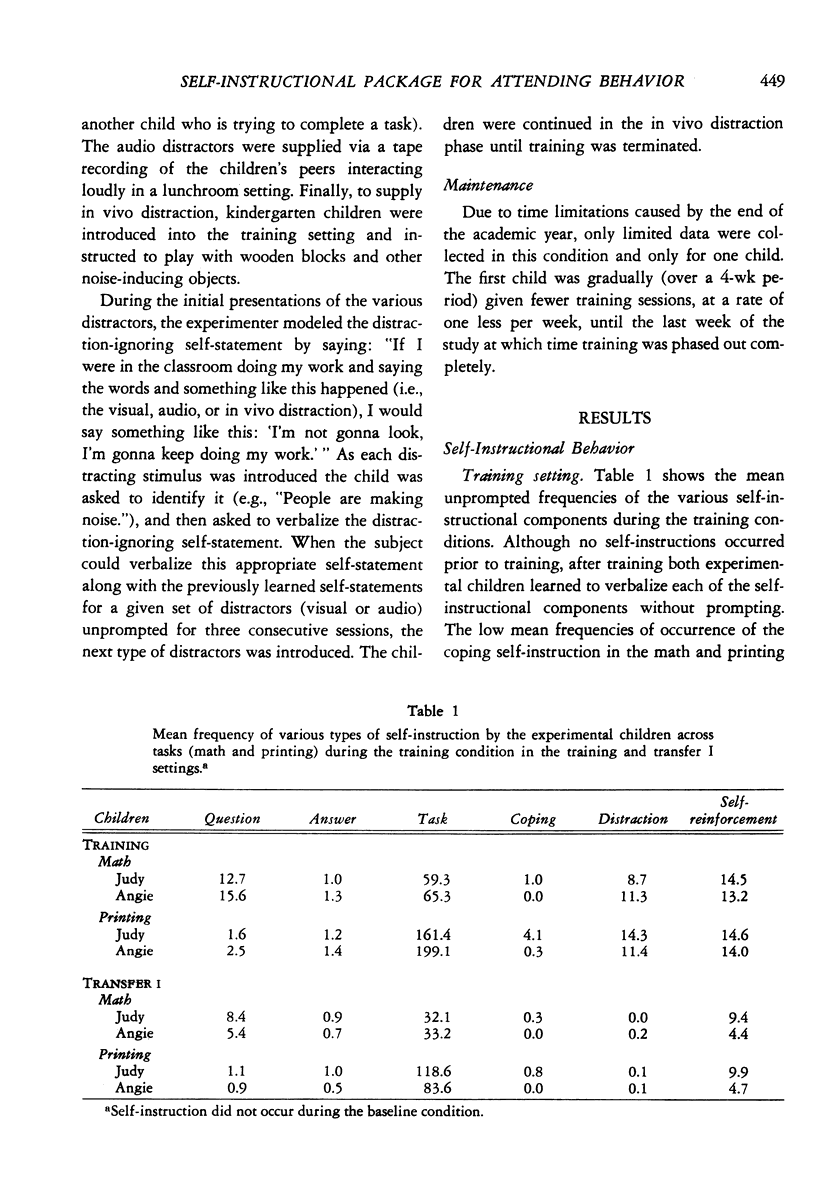

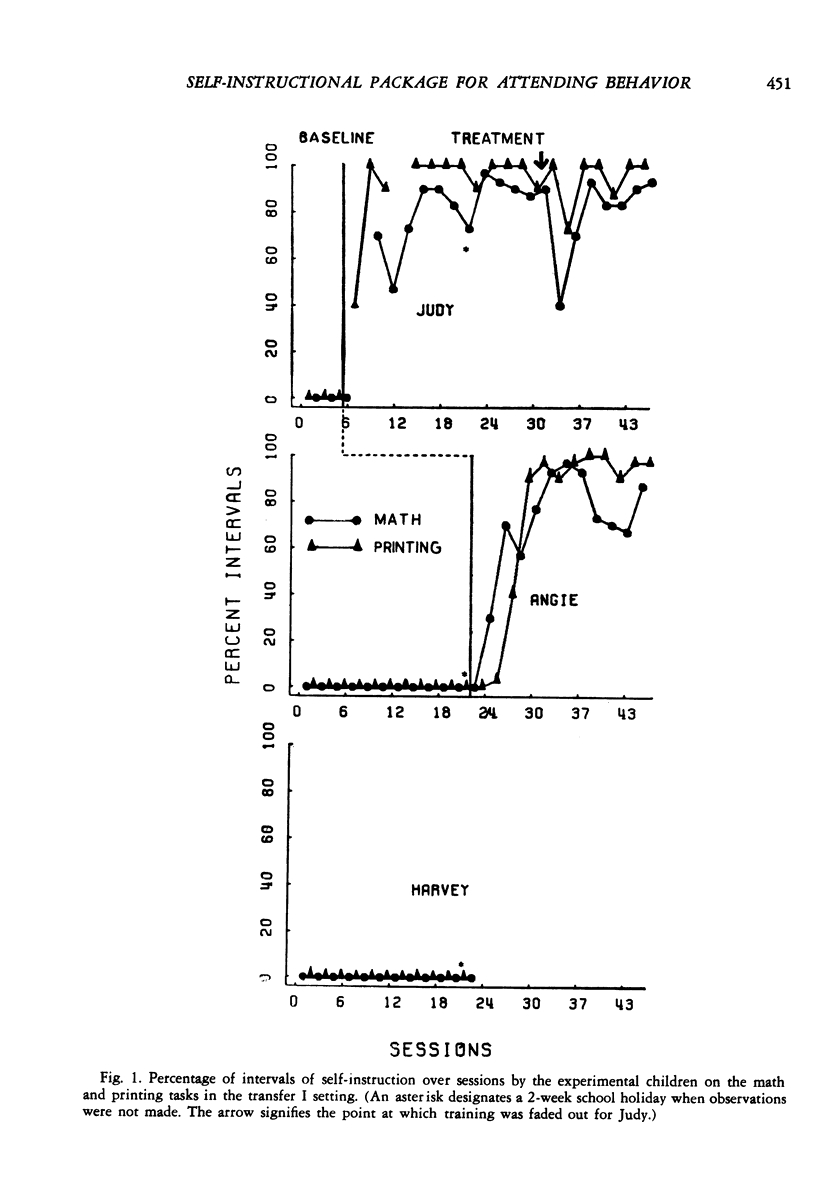
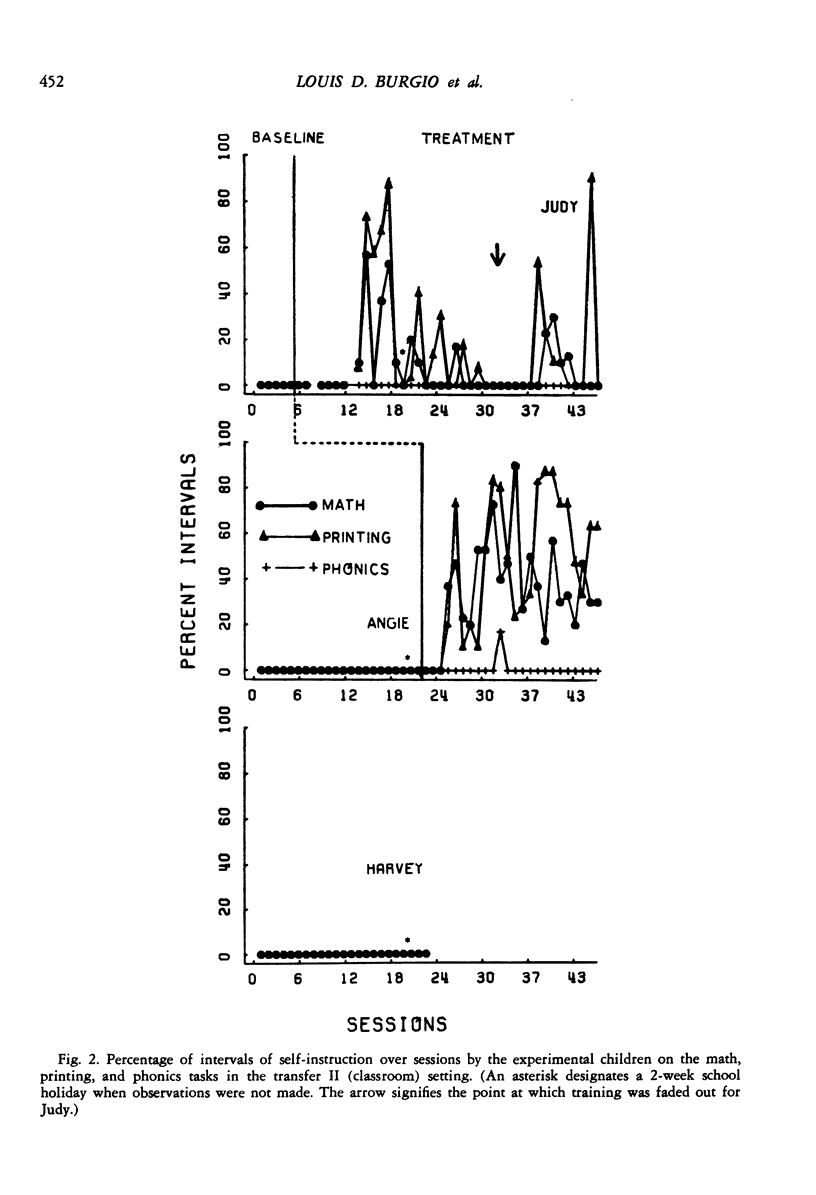
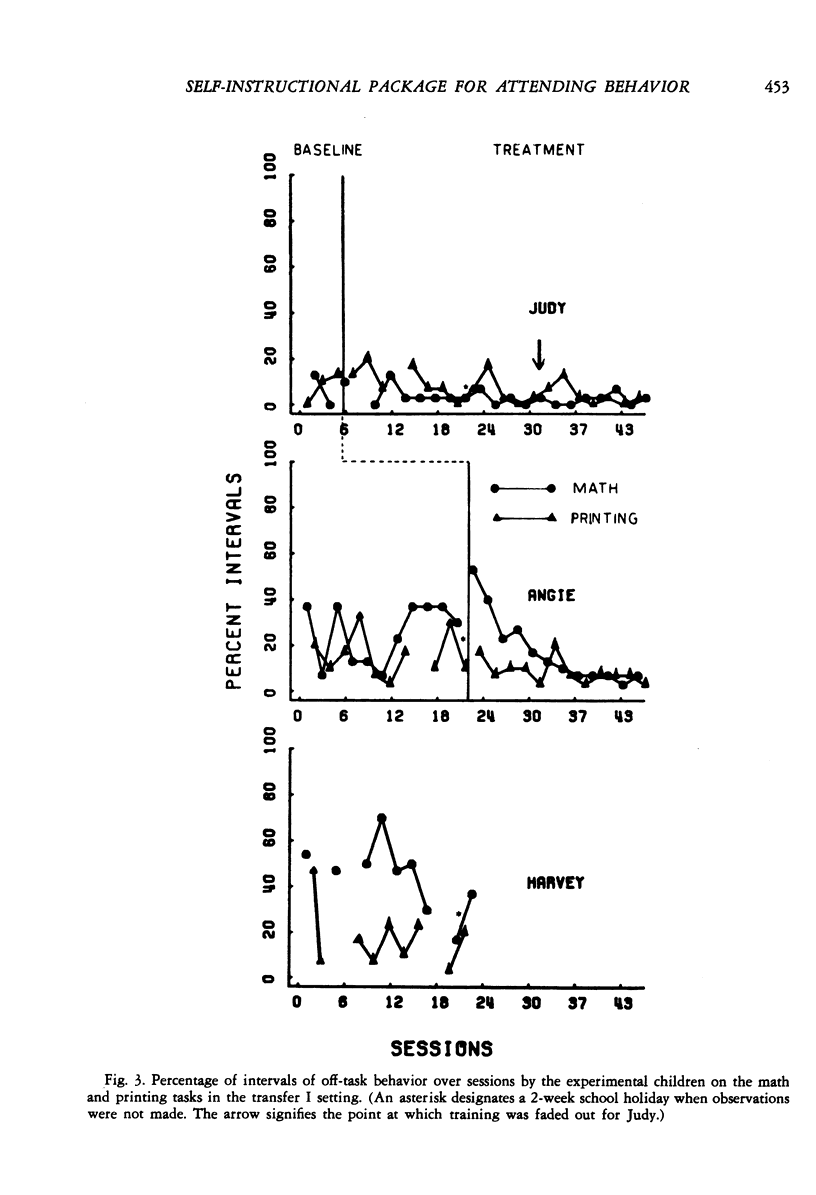
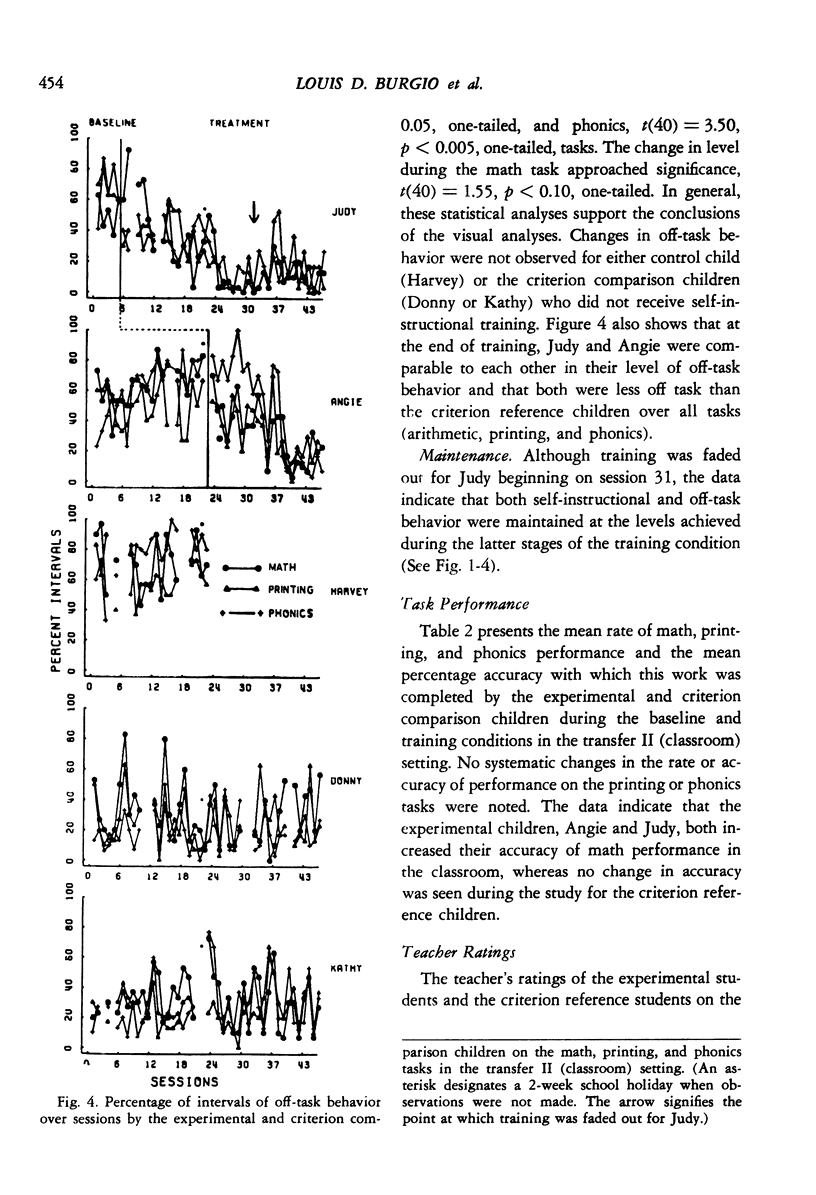
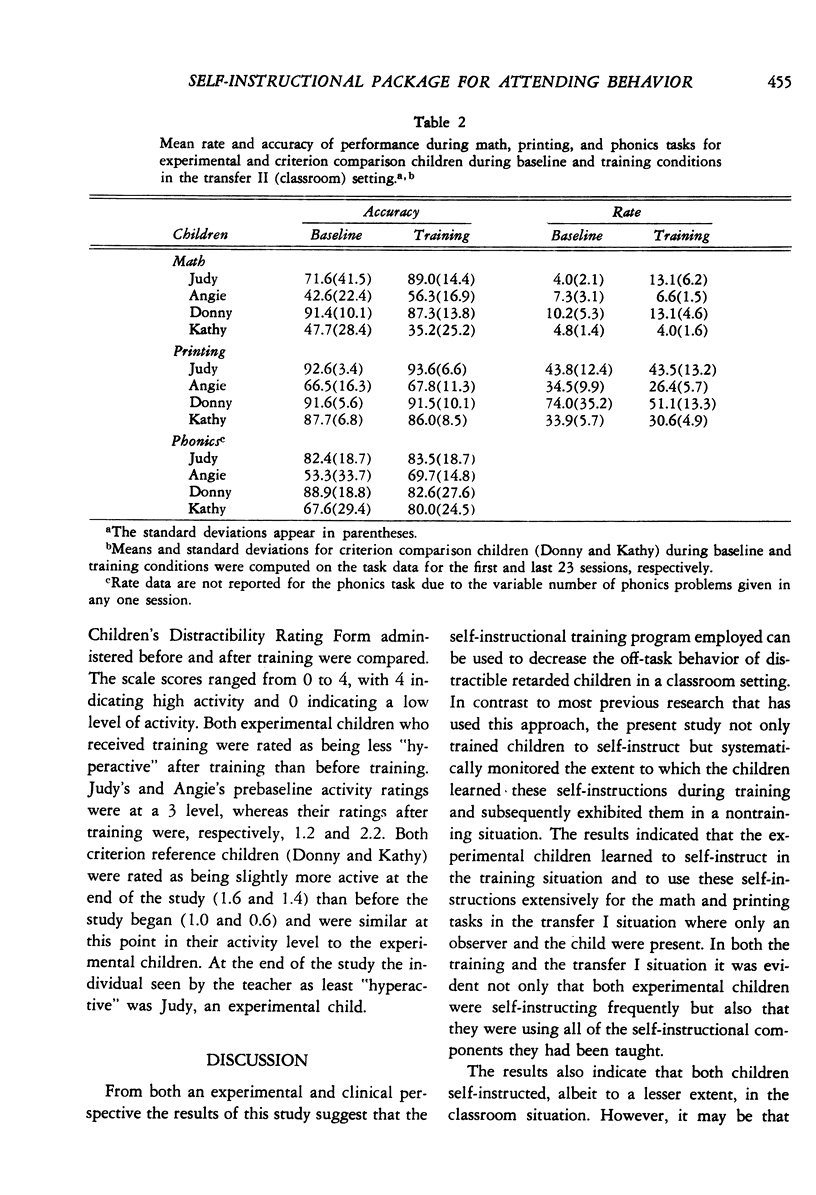


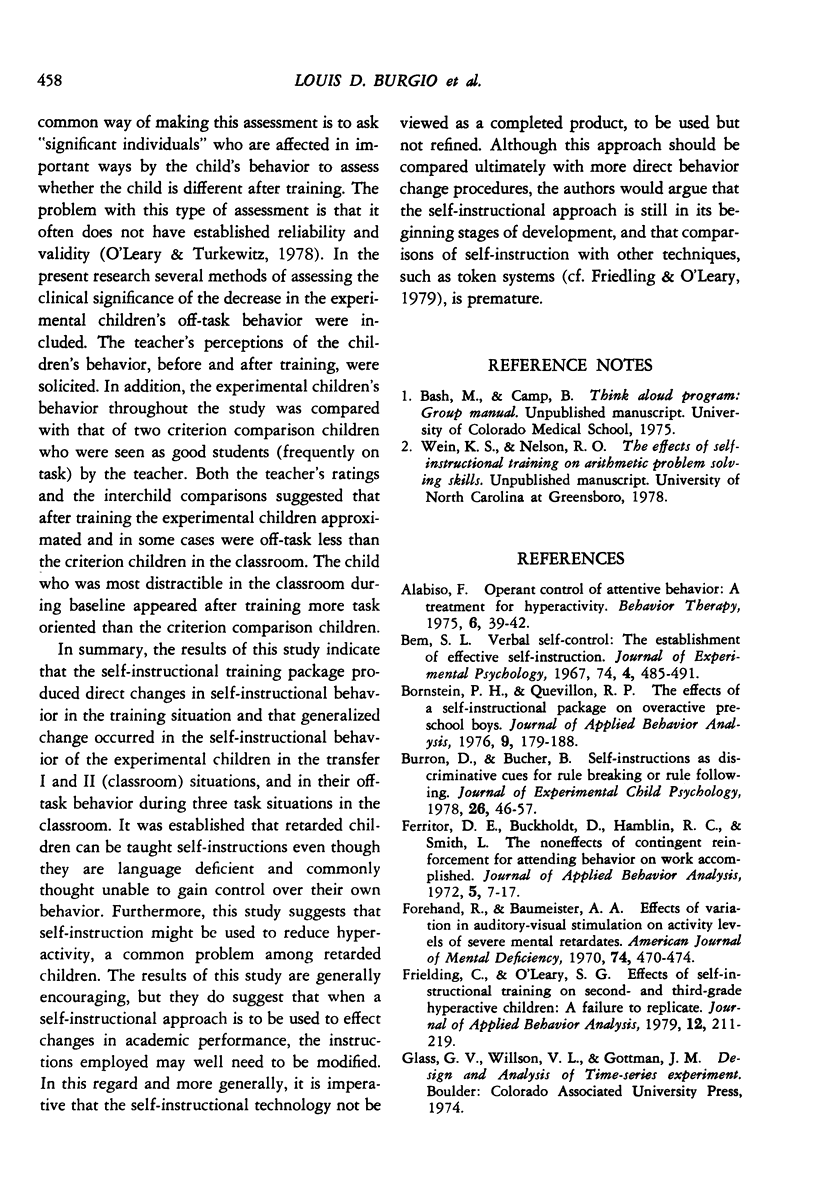

Selected References
These references are in PubMed. This may not be the complete list of references from this article.
- Bornstein P. H., Quevillon R. P. The effects of a self-instructional package on overactive preschool boys. J Appl Behav Anal. 1976 Summer;9(2):179–188. doi: 10.1901/jaba.1976.9-179. [DOI] [PMC free article] [PubMed] [Google Scholar]
- Ferritor D. E., Buckholdt D., Hamblin R. L., Smith L. The noneffects of contingent reinforcement for attending behavior on work accomplished. J Appl Behav Anal. 1972 Spring;5(1):7–17. doi: 10.1901/jaba.1972.5-7. [DOI] [PMC free article] [PubMed] [Google Scholar]
- Forehand R., Baumeister A. A. Effects of variations in auditory-visual stimulation on activity levels of severe mental retardates. Am J Ment Defic. 1970 Jan;74(4):470–474. [PubMed] [Google Scholar]
- Friedling C., O'Leary S. G. Effects of self-instructional training on second- and third-grade hyperactive children: a failure to replicate. J Appl Behav Anal. 1979 Summer;12(2):211–219. doi: 10.1901/jaba.1979.12-211. [DOI] [PMC free article] [PubMed] [Google Scholar]
- Helwig J. J., Johns J. C., Norman J. E., Cooper J. O. The measurement of manuscript letter strokes. J Appl Behav Anal. 1976 Summer;9(2):231–236. doi: 10.1901/jaba.1976.9-231. [DOI] [PMC free article] [PubMed] [Google Scholar]
- Kazdin A. E. Methodological and interpretive problems of single-case experimental designs. J Consult Clin Psychol. 1978 Aug;46(4):629–642. doi: 10.1037//0022-006x.46.4.629. [DOI] [PubMed] [Google Scholar]
- LOVAAS O. I. CUE PROPERTIES OF WORDS: THE CONTROL OF OPERANT RESPONDING BY RATE AND CONTENT OF VERBAL OPERANTS. Child Dev. 1964 Mar;35:245–256. doi: 10.1111/j.1467-8624.1964.tb05934.x. [DOI] [PubMed] [Google Scholar]
- Meichenbaum D. H., Goodman J. Training impulsive children to talk to themselves: a means of developing self-control. J Abnorm Psychol. 1971 Apr;77(2):115–126. doi: 10.1037/h0030773. [DOI] [PubMed] [Google Scholar]
- O'Leary K. D., Turkewitz H. Methodological errors in marital and child treatment research. J Consult Clin Psychol. 1978 Aug;46(4):747–758. doi: 10.1037//0022-006x.46.4.747. [DOI] [PubMed] [Google Scholar]
- O'leary K. D., Becker W. C., Evans M. B., Saudargas R. A. A token reinforcement program in a public school: a replication and systematic analysis. J Appl Behav Anal. 1969 Spring;2(1):3–13. doi: 10.1901/jaba.1969.2-3. [DOI] [PMC free article] [PubMed] [Google Scholar]
- PATTERSON G. R., JONES R., WHITTIER J., WRIGHT M. A. A BEHAVIOUR MODIFICATION TECHNIQUE FOR THE HYPERACTIVE CHILD. Behav Res Ther. 1964;2(2-4):217–226. doi: 10.1016/0005-7967(64)90019-1. [DOI] [PubMed] [Google Scholar]
- Palkes H., Stewart M., Kahana B. Porteus maze performance of hyperactive boys after training in self-directed verbal commands. Child Dev. 1968 Sep;39(3):817–826. [PubMed] [Google Scholar]
- Reardon D. M., Bell G. Effects of sedative and stimulative music on activity levels of severely retarded boys. Am J Ment Defic. 1970 Sep;75(2):156–159. [PubMed] [Google Scholar]
- Stokes T. F., Baer D. M. An implicit technology of generalization. J Appl Behav Anal. 1977 Summer;10(2):349–367. doi: 10.1901/jaba.1977.10-349. [DOI] [PMC free article] [PubMed] [Google Scholar]
- Surratt P. R., Ulrich R. E., Hawkins R. P. An elementary student as a behavioral engineer. J Appl Behav Anal. 1969 Summer;2(2):85–92. doi: 10.1901/jaba.1969.2-85. [DOI] [PMC free article] [PubMed] [Google Scholar]
- Whitman T. L., Caponigri V., Mercurio J. Reducing hyperactive behavior in a severely retarded child. Ment Retard. 1971 Jun;9(3):17–19. [PubMed] [Google Scholar]


